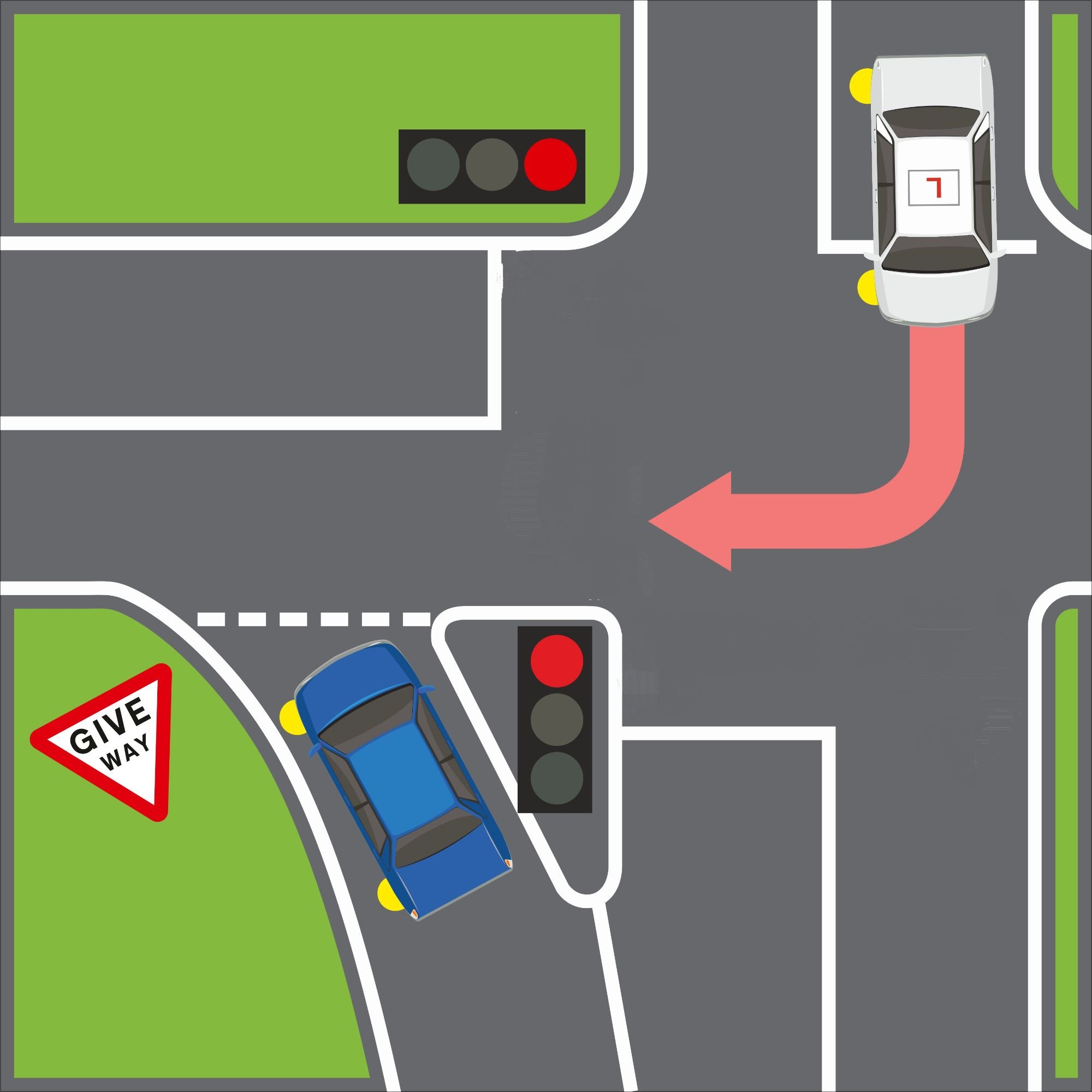A guide to Crossroads
Identifying Marked and Unmarked Crossroads
The definition of a crossroads is where two or more roads cross each other and form an intersection.
Crossroads of various types will most certainly be part of the driving test and is a road system that must be thoroughly practiced before taking the test. Crossroads vary from the very quiet residential areas to the hectic multi-lane systems is busy areas.
Crossroads can cause confusion for not only learner drivers, but experienced fully licensed drivers are often unsure how to deal with them.
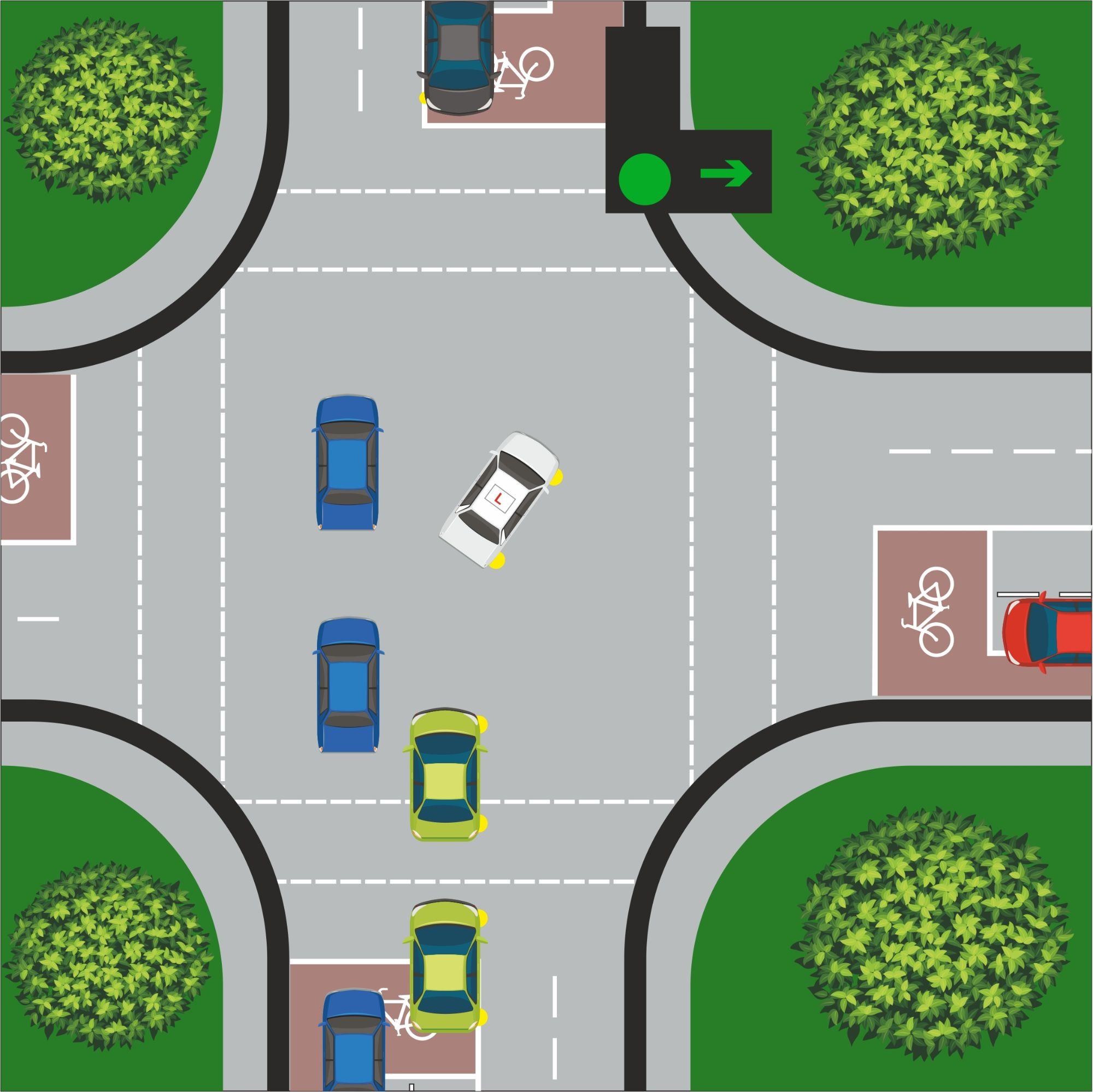
Crossroads - Road Marking Controlled
Marked crossroads
A marked crossroad junction will have road markings warning motorists that they must give way to traffic on the major road and a give way sign may also be present sometimes if the junction is a closed view or a blind junction it may have a stop sign instead
Moving out of marked crossroads is similar to a typical marked T-junction with the exception that extra attention and observations will be needed for the road opposite to allow for any vehicles wishing to join the major road.
No one has priority from the opposite roads where vehicles wish to join the major road
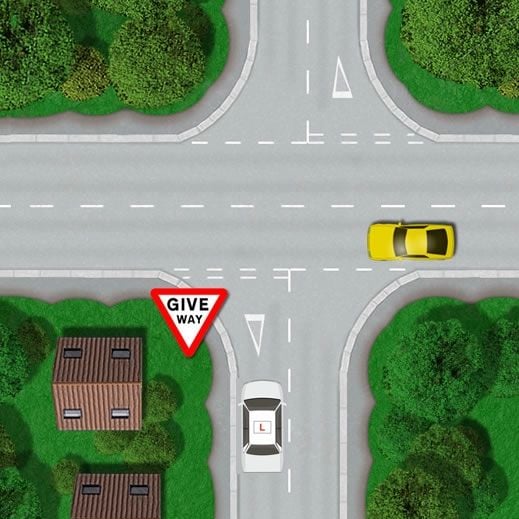
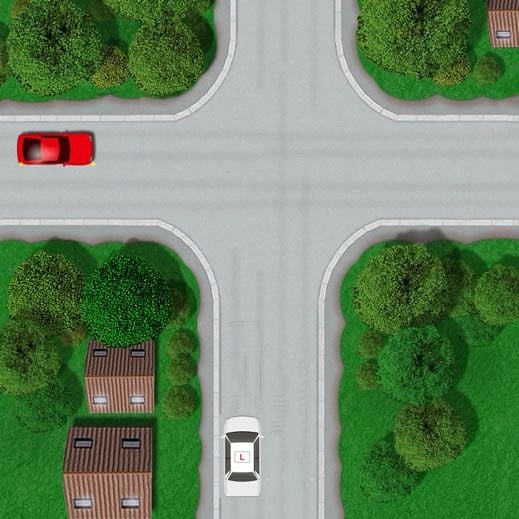
Unmarked Crossroads
Unmarked crossroads
What is an unmarked crossroads? Essentially, there are no road markings or signs to inform motorists that they must give way or to warn of the crossroad junction ahead. Typically found in quiet residential areas or on very rural roads. Although unmarked crossroads appear quiet and stress-free, the often offer motorists some of the most hazardous conditions.
Who has priority at an unmarked crossroads?
**No one has priority at an unmarked crossroads**.
Due to the lack of warning signs for the impending crossroads, no road markings to provide drivers with a clue that they must give way, unmarked crossroads can be difficult to locate.
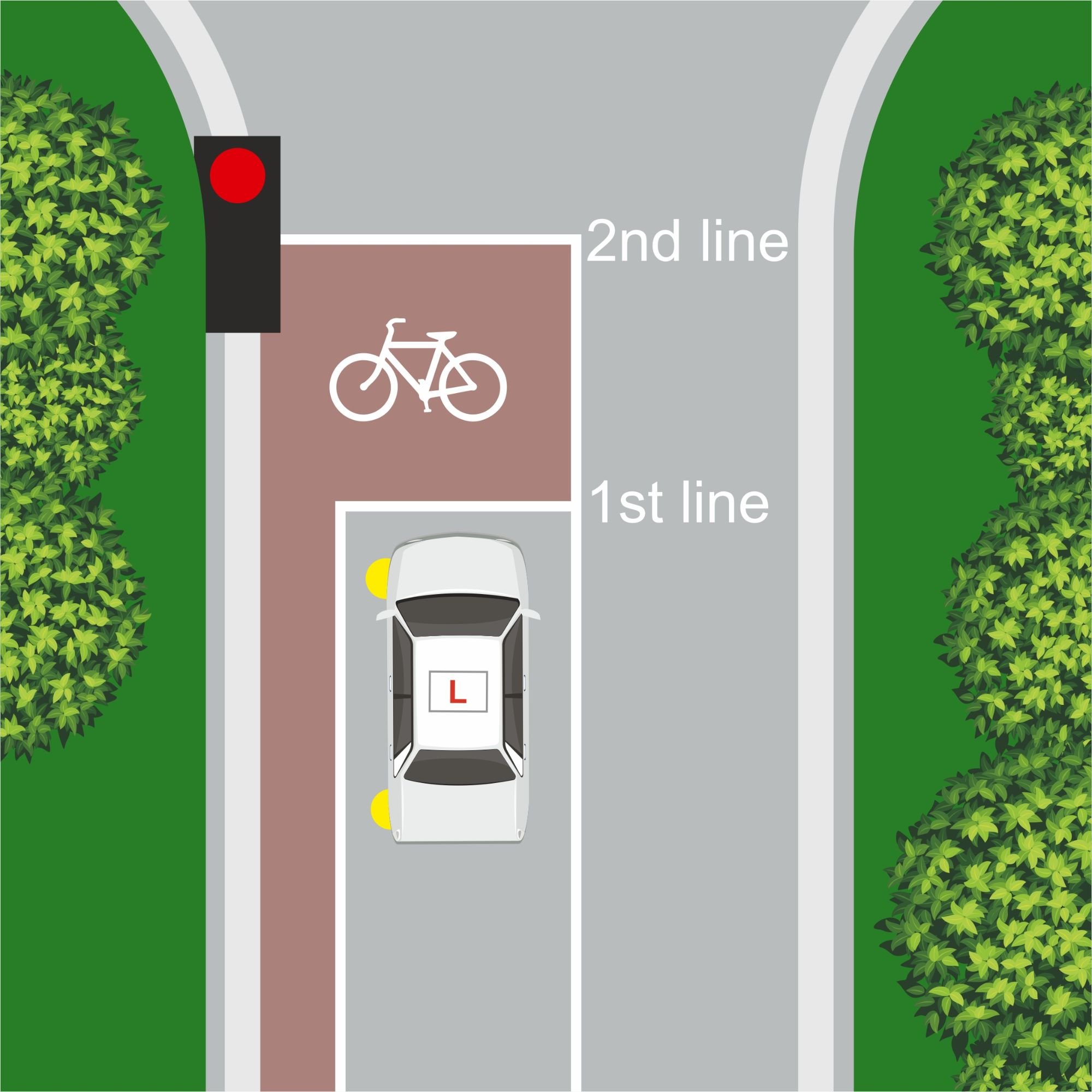
Controlled Crossroads - Road Markings
Controlled crossroads road markings and signs
Motorists, cyclists and pedestrians are controlled by the use of traffic lights at controlled crossroads junction. Controlled crossroads are used in busy locations where the use of traffic lights and road markings provide a safer and more controlled system.
Crossroad rules dictate that everyone must stop on a amber or red light. Unfortunately, not everyone obeys these rules – especially pedestrians and cyclists
Controlled Crossroads Lights and Filters
When you turn right at a crossroads the rules are the same for when you do a normal right turn.
You come into the centre of the road, without crossing the white line
You stop level with the white line of the road that you are turning into
And once you have a safe gap you go across.
The same is true at crossroads, the only difference is, if you can't find a safe gap, then you may have to wait until the lights go red to cross.
If you've already crossed the lights on green, then it is acceptable to wait for the lights to change so you can cross safely
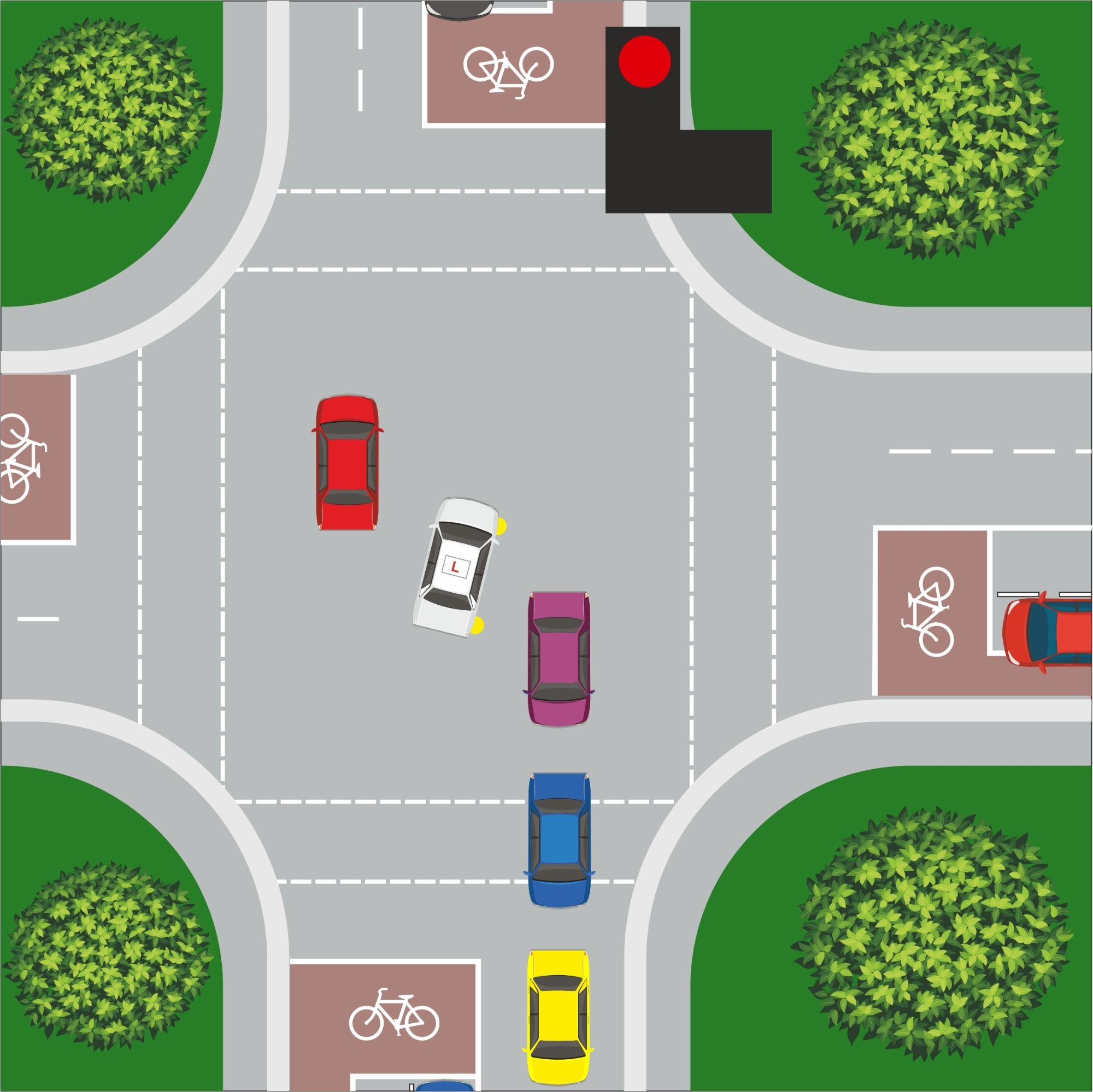
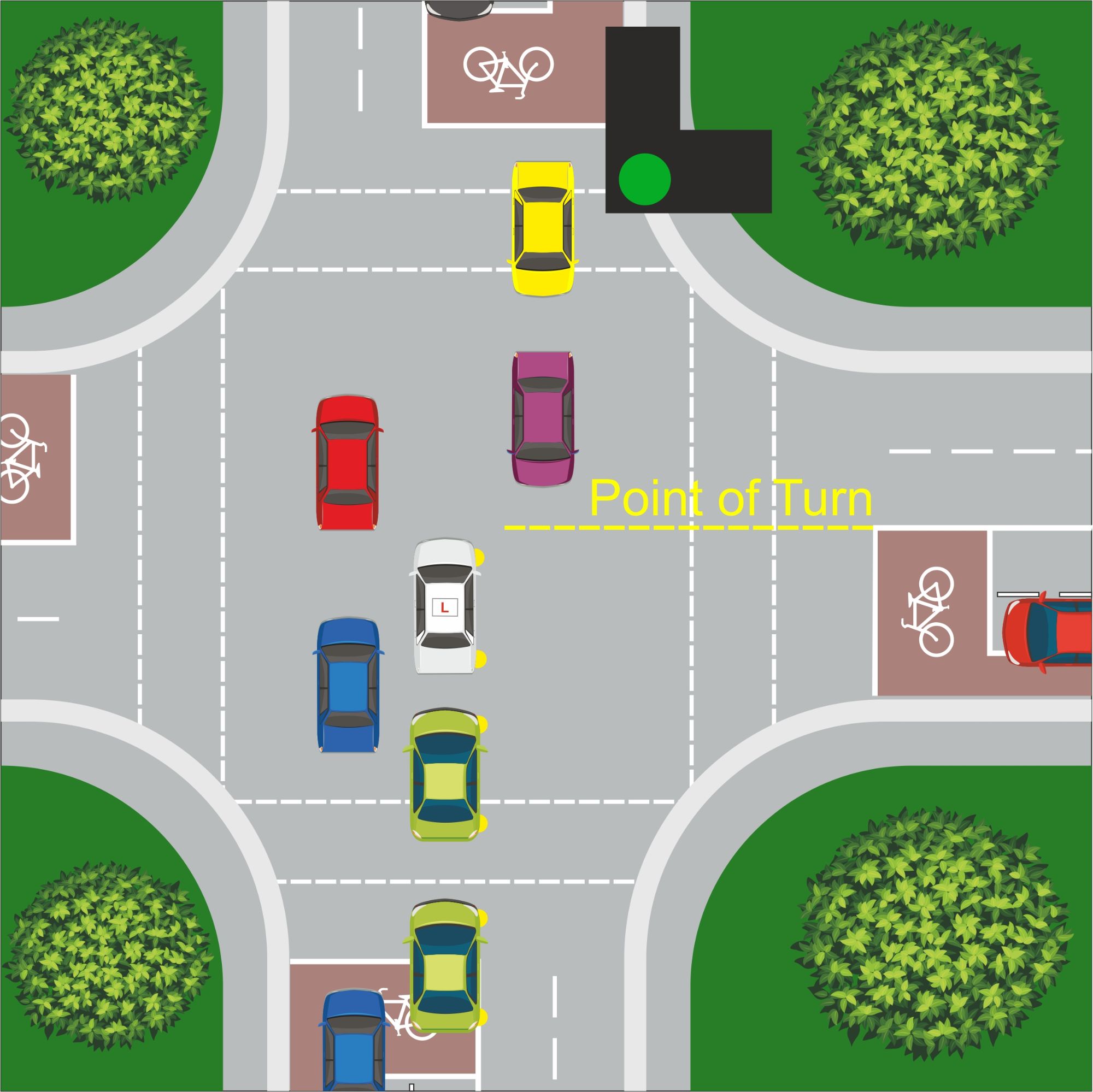
Controlled Crossroads - Traffic Lights
If the light is on green, then provided you are not the 3rd or 4th car in the queue (if you are then the chances are the traffic will be coming from left and right before you can move)
Then its fine to come across into the middle of the junction, stop level with the centre line of the road that you're turning into
And then wait for a gap or for the lights to turn red so you can cross safely.
Controlled Crossroads - Green Filter Light
FIlter lights A green traffic filter light allows traffic to proceed in the direction of the arrow.
A directional green filter arrow means that you have priority over traffic as their lights will be on red when you make the turn.
As with all junctions be aware of pedestrians and cyclists whilst making the turn. Just because you have priority, there is a possibility of another vehicle, cyclist or pedestrian crossing or being where they shouldn’t be.
If you are turning right and the green filter traffic light is illuminated, oncoming traffic will have a red light giving you priority to proceed

Crossroads Stop and Give Way (Filter Lane)
Occasionally you may come across Crossroads, that have both Stop AND Giveway markings.
These are known as slip roads or filter lanes. In Telford the most notoriou8s of these types of junction is at what is known as the Cock Hotel Lights.
As you can see the lane on the left has a broken white line at the end - meaning they have to give way to whatever is coming from the right.
However, whatever is going straight ahead is controlled by the traffic lights. They have the solid white line or Stop Line.
The problems often come when the traffic light is on red and so the traffic in the left lane stop and wait - (Which they shouldn't)
The only reason that the traffic going left needs to stop, is if there is any traffic coming from the right.
Crossroads - Traffic lights and Yellow Box Junction
When using a crossroad with traffic lights and a yellow box junction, the main thing to focus on is the box junction.
Can your car fully clear it - BEFORE you go into it.
If the answer is no - then it doesn't matter if the traffic lights are on green or not
You need to stop at the traffic light line and wait for your exit to be clear
Otherwise you will have a £130 fine coming through the post.
To understand how to use a yellow box junction - See Our guide here
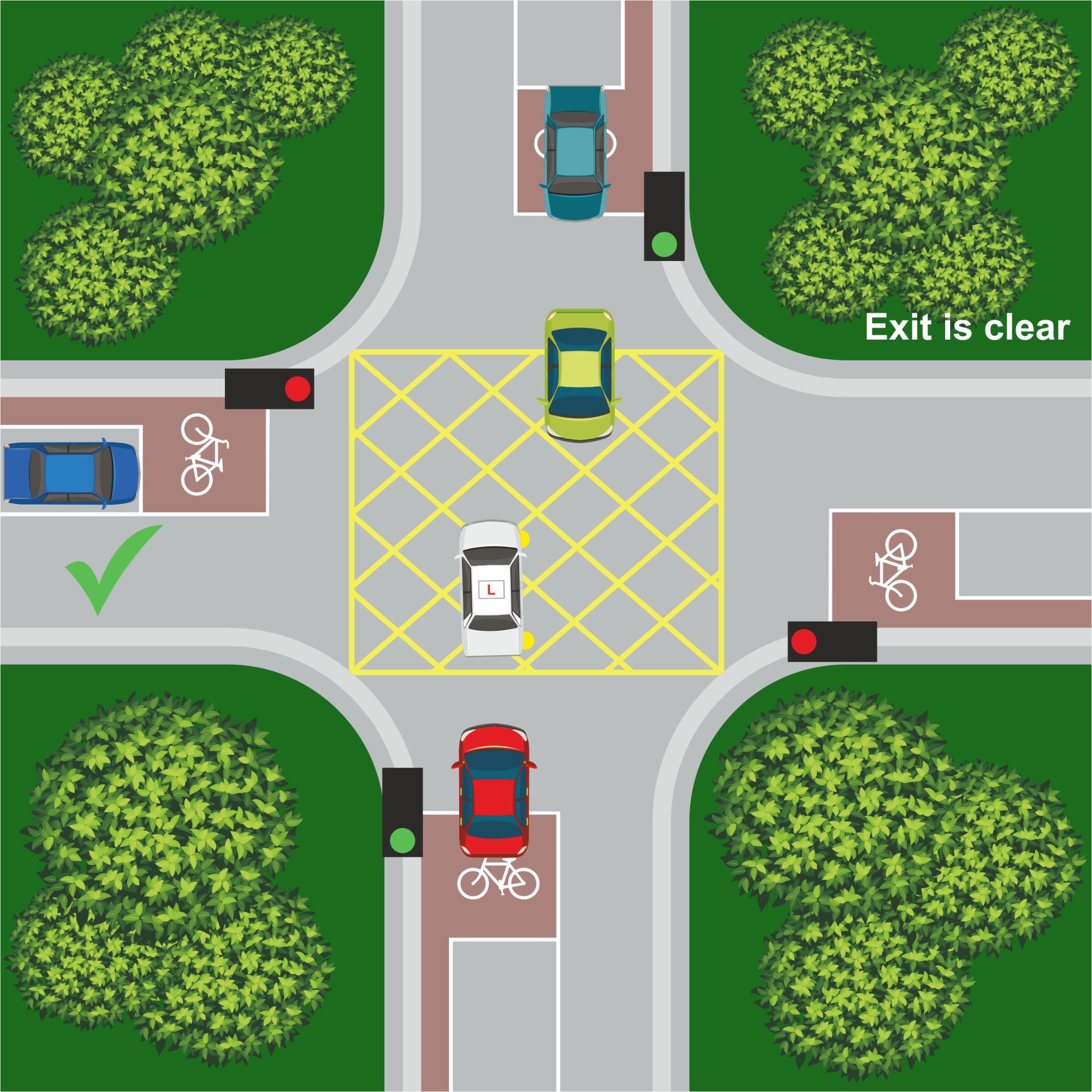
Crossroads - Who has right of way?
Right of way crossroads
Crossroads rules are similar to those of left and right turns and T-junctions.
If crossing another vehicles lane, the other vehicle will have right of way unless stated otherwise by signs, signals or road markings.
If turning right at a crossroads and a vehicle directly opposite is also turning to their right, you will need to decide whether to turn behind or in front of them.
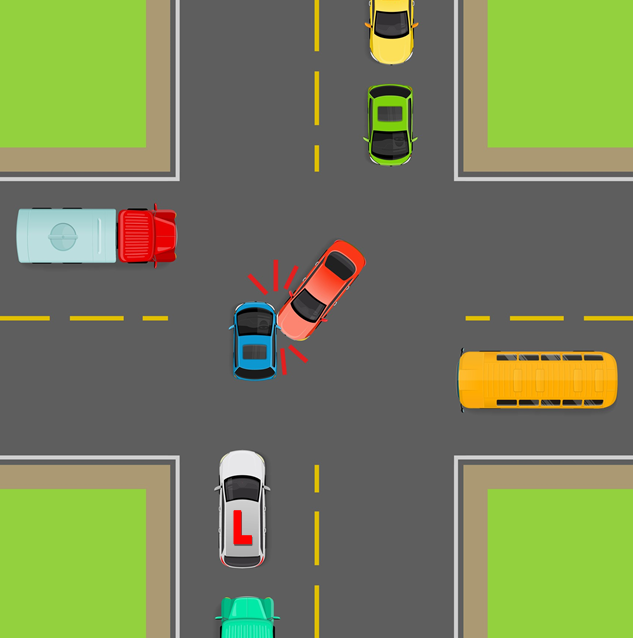

Turning Right - Drivers side To Drivers side
There are 2 ways of turning right at crossroads
The first is DRIVERS SIDE TO DRIVERS SIDE
You go past the car coming towards you and then turn.
The plus point with this is your view of any other traffic coming is not hindered.
Therefore you can see if its safe to go or not.
NEGATIVE - The negative point with using this method is it only allows one car at a time to turn
So most drivers DON'T use this way.
Passengers Side to Passengers side
The second and most common way of turning right at a crossroads is
PASSENGER SIDE TO PASSENGER SIDE
This means you stop before the centre white line, and start to turn earlier - (But without going on the wrong side of the road.)
The Positive point with this method is it allows several cars to turn at the same time
The NEGATIVE point with this method is that your view is restricted for anything coming from behind the other vehicle
So checking to make sure that there are no bikes or scooters is really important
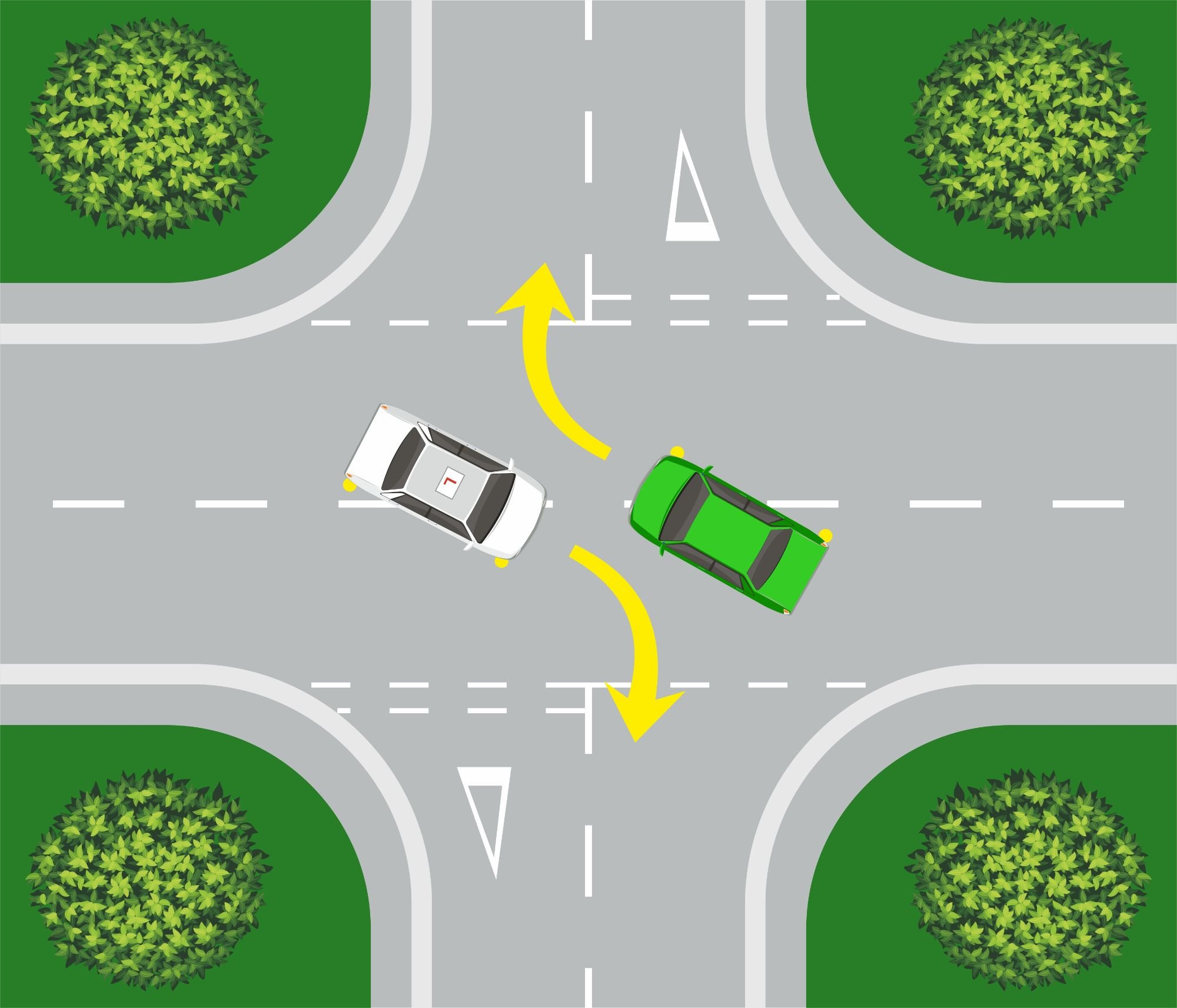
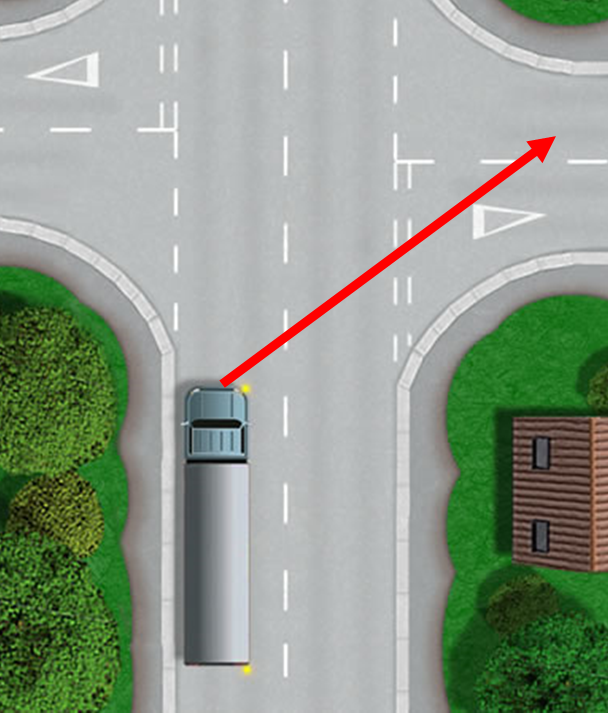
Crossroads - Large Vehicles Turning Right
Also to be aware of at crossroads is if large vehicles are wanting to turn right.
Because they need a larger turning circle than cars
It is more than likely that they will cut across the centre white line
Therefore as you are approaching the crossroads
If you see a large vehicle about to turn into the crossroad
it may be better to stop earlier than the give way lines to allow the lorry
to have more space
Going Ahead from Side Road to Side Road
If going straight ahead at a crossroads, the first thing you need to do
Is look and assess the position of the road opposite
This will determine your position on approach
If as in picture A the road is completely opposite - then you can stay to the left of your lane as normal.
If the road is narrower or slightly to the side - As in Picture B
Then you would need to stay to the right of your lane
Otherwise you would have to swerve to the right to avoid the kerb and there may be another vehicle next to you
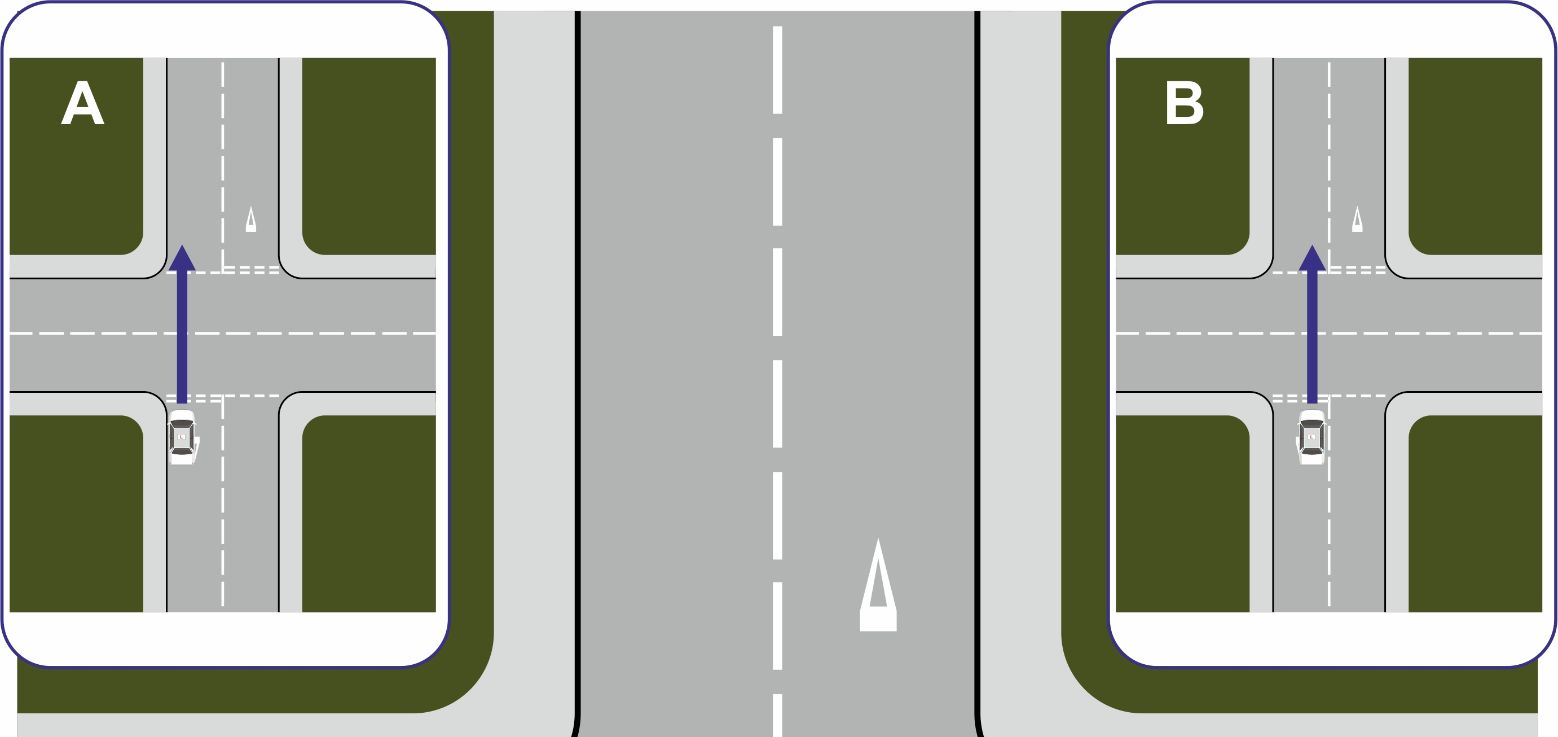
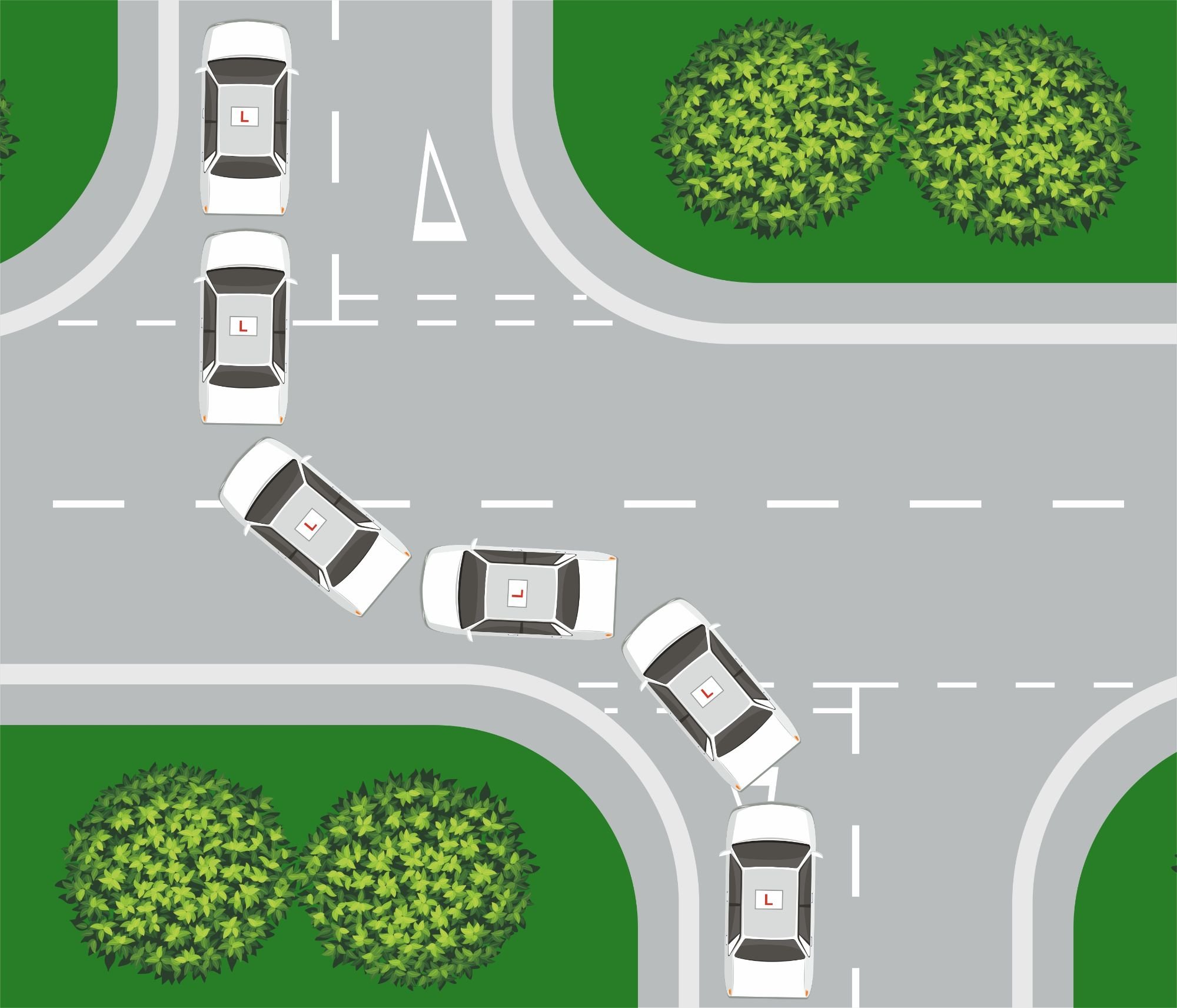
Staggered Crossroads - How To Do It
When you approach a staggered crossroads it means the road opposite is not just offset - but further down the road
So rather than doing this routine in one - as you would on a normal crossroads
You need to treat it as a Left Emerge followed by a Right Turn.
Offset Crossroads
An offset crossroads as the name suggests, is almost straight across but not quite
With this style of crossing
You simply need to wait until the main road is clear and no one is turning right from the road opposite
Then just head straight across in one movement reather than emerge left and then turn right.
However if the main road was very busy it would be quicker and simpler to emerge left and then wait to turn right when there was a safe gap.
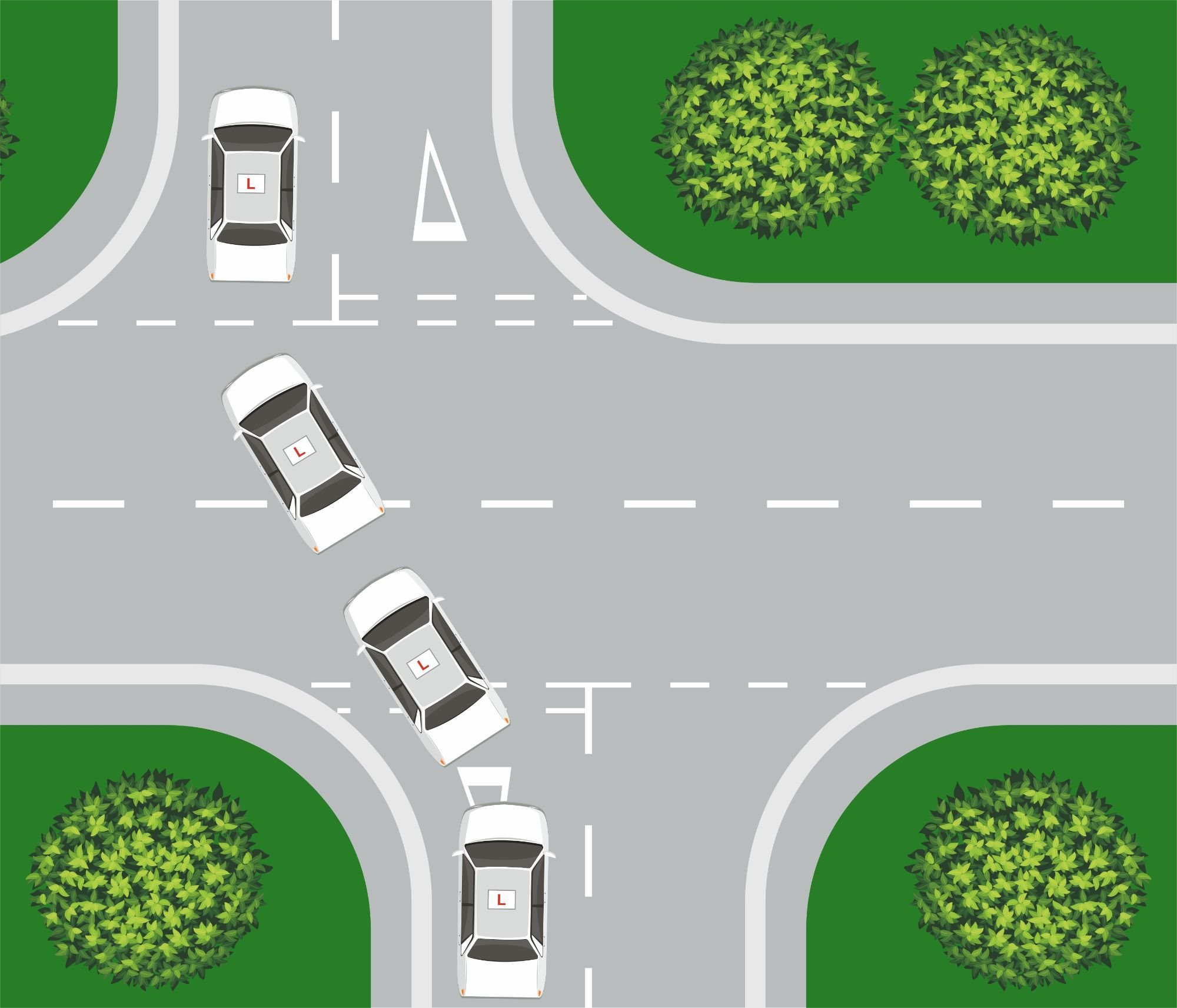
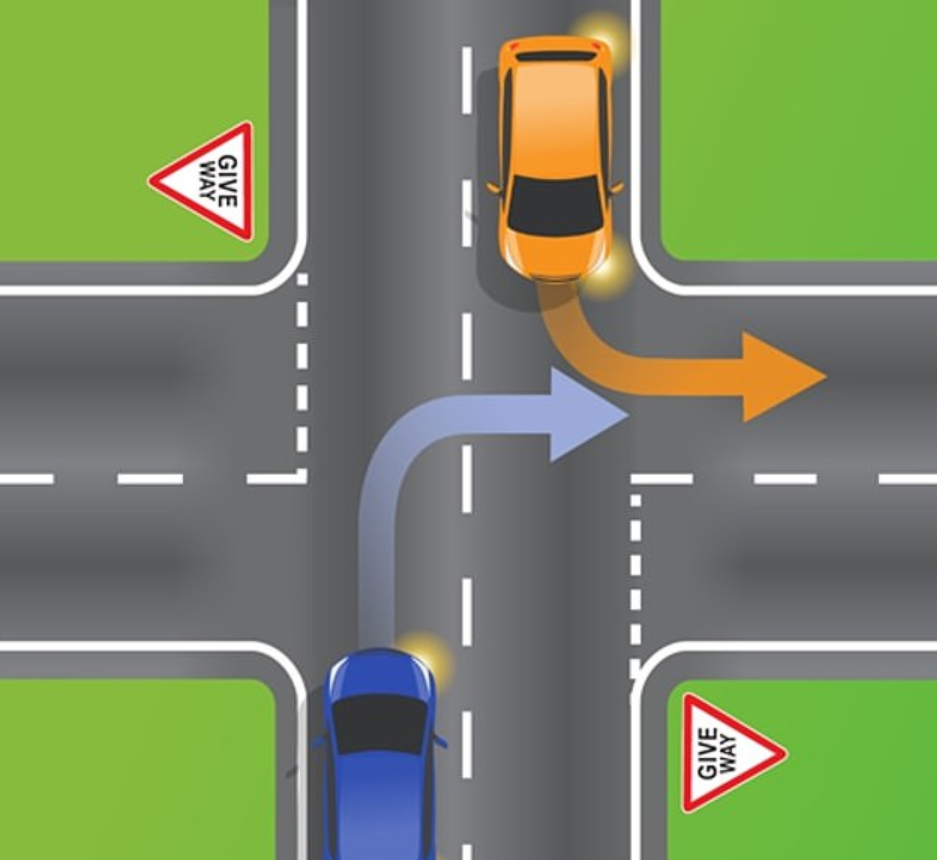
Crossroads - Turning and Priority
The main rule of driving is
If you are crossing someone elses lane - They have priority
So in this example the blue car has to wait for the orange car because the blue car is crossing into the orange cars' lane.
Crossroads - Multiple Traffic
This one looks more complicated
However it is actually quite simple
The learner car at the bottom and the bus on the right, have to wait and give way to the green car
They are both crossing the green cars' lane so they have to wait.
Whilst they are waiting the lorry on the left, can carry on as his lane would be clear whilst the learner car was waiting.
Once the green car had driven past the learner and the bus.
The bus would then have to wait for the learner to turn,
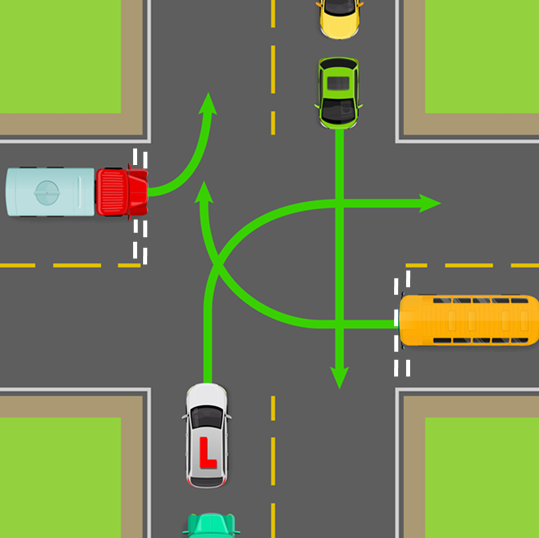
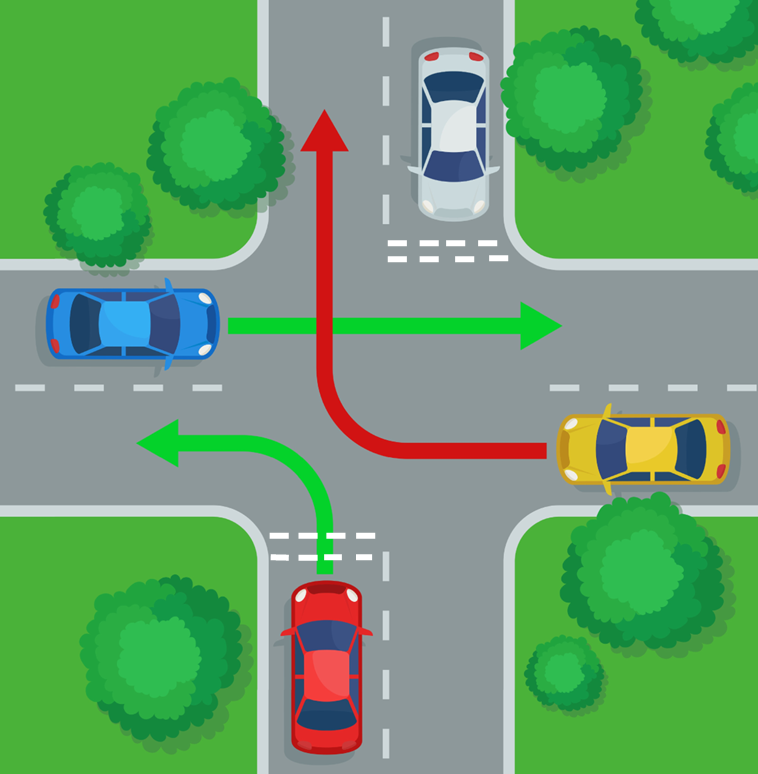
Who Has Priority?
In this example
The orange car has to wait for the blue car to pass, because the orange car is going across the blue cars' lane.
Whilst the orange car is stopped waiting, the red car has time and space to turn left from the side road.
Once the blue car has gone past, the orange car can go,
Unmarked Crossroads - No Priority
At this junction, there are no give way or stop lines
Therefore NO ONE has priority
The cars collide because BOTH drivers presume that the other will stop for them.
This is completely the opposite of what is expected.
Both drivers should have waited to see who was giving way to who
The proper way to deal with this situation is to presume that the other driver IS NOT going to stop.
Then deal with whatever you see the other driver doing.
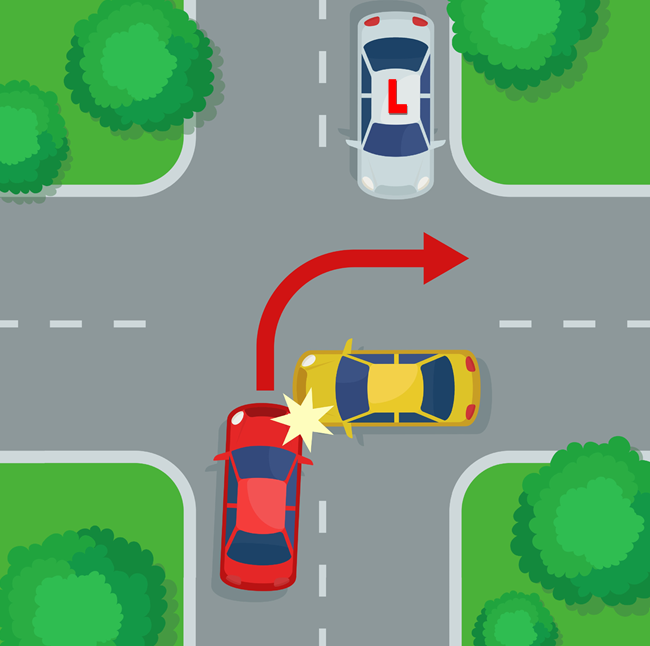
Contact Us
Hours
Monday - Friday:
09:00 am - 6:00 pm
Saturday - Sunday:
10:00 am - 3:00 pm
